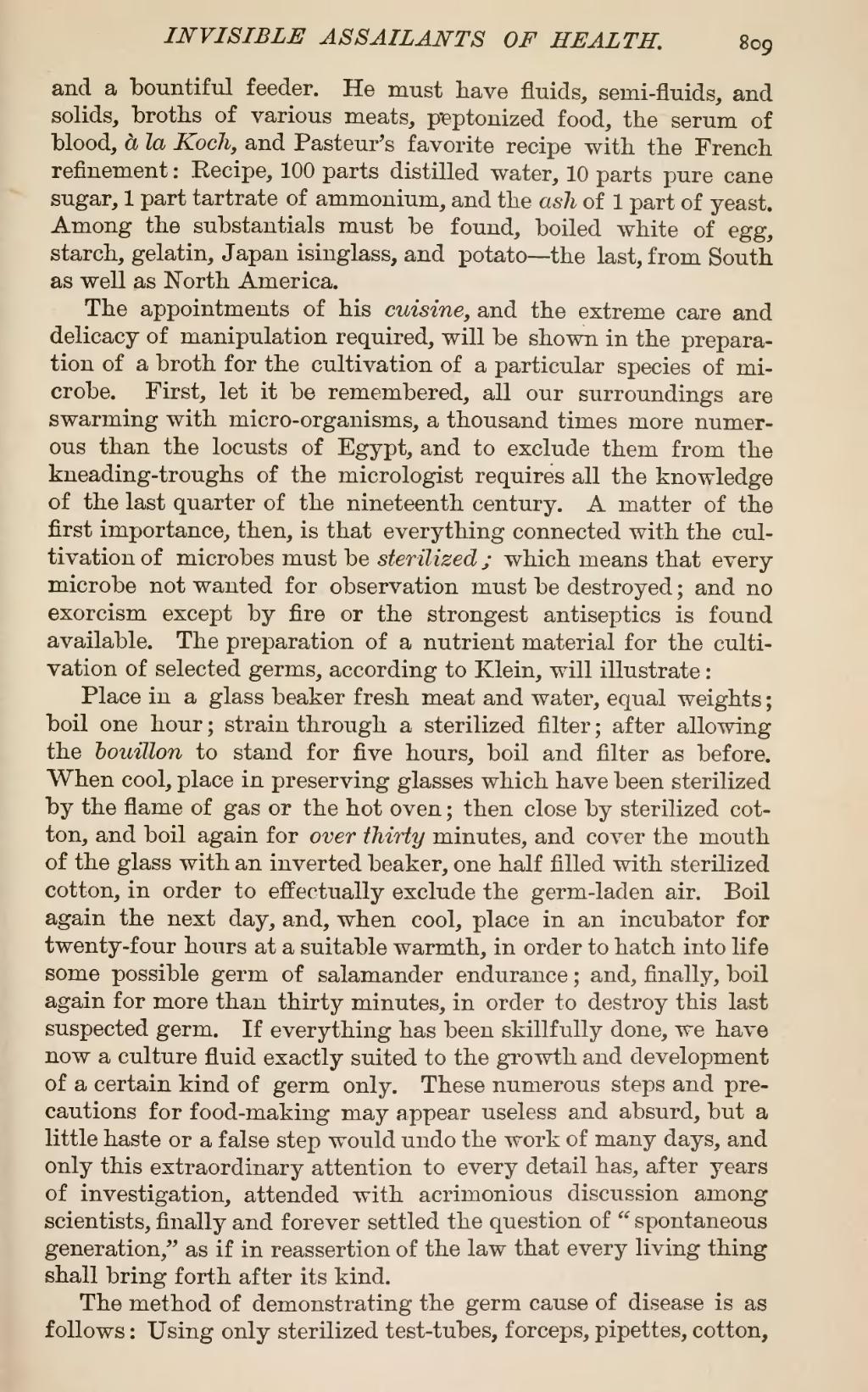and a bountiful feeder. He must have fluids, semi-fluids, and solids, broths of various meats, peptonized food, the serum of blood, à la Koch, and Pasteur's favorite recipe with the French refinement: Recipe, 100 parts distilled water, 10 parts pure cane sugar, 1 part tartrate of ammonium, and the ash of 1 part of yeast. Among the substantial must be found, boiled white of egg, starch, gelatin, Japan isinglass, and potato—the last, from South as well as North America.
The appointments of his cuisine, and the extreme care and delicacy of manipulation required, will be shown in the preparation of a broth for the cultivation of a particular species of microbe. First, let it be remembered, all our surroundings are swarming with micro-organisms, a thousand times more numerous than the locusts of Egypt, and to exclude them from the kneading-troughs of the micrologist requires all the knowledge of the last quarter of the nineteenth century. A matter of the first importance, then, is that everything connected with the cultivation of microbes must be sterilized; which means that every microbe not wanted for observation must be destroyed; and no exorcism except by fire or the strongest antiseptics is found available. The preparation of a nutrient material for the cultivation of selected germs, according to Klein, will illustrate:
Place in a glass beaker fresh meat and water, equal weights; boil one hour; strain through a sterilized filter; after allowing the bouillon to stand for five hours, boil and filter as before. When cool, place in preserving glasses which have been sterilized by the flame of gas or the hot oven; then close by sterilized cotton, and boil again for over thirty minutes, and cover the mouth of the glass with an inverted beaker, one half filled with sterilized cotton, in order to effectually exclude the germ-laden air. Boil again the next day, and, when cool, place in an incubator for twenty-four hours at a suitable warmth, in order to hatch into life some possible germ of salamander endurance; and, finally, boil again for more than thirty minutes, in order to destroy this last suspected germ. If everything has been skillfully done, we have now a culture fluid exactly suited to the growth and development of a certain kind of germ only. These numerous steps and precautions for food-making may appear useless and absurd, but a little haste or a false step would undo the work of many days, and only this extraordinary attention to every detail has, after years of investigation, attended with acrimonious discussion among scientists, finally and forever settled the question of "spontaneous generation," as if in reassertion of the law that every living thing shall bring forth after its kind.
The method of demonstrating the germ cause of disease is as follows: Using only sterilized test-tubes, forceps, pipettes, cotton,
